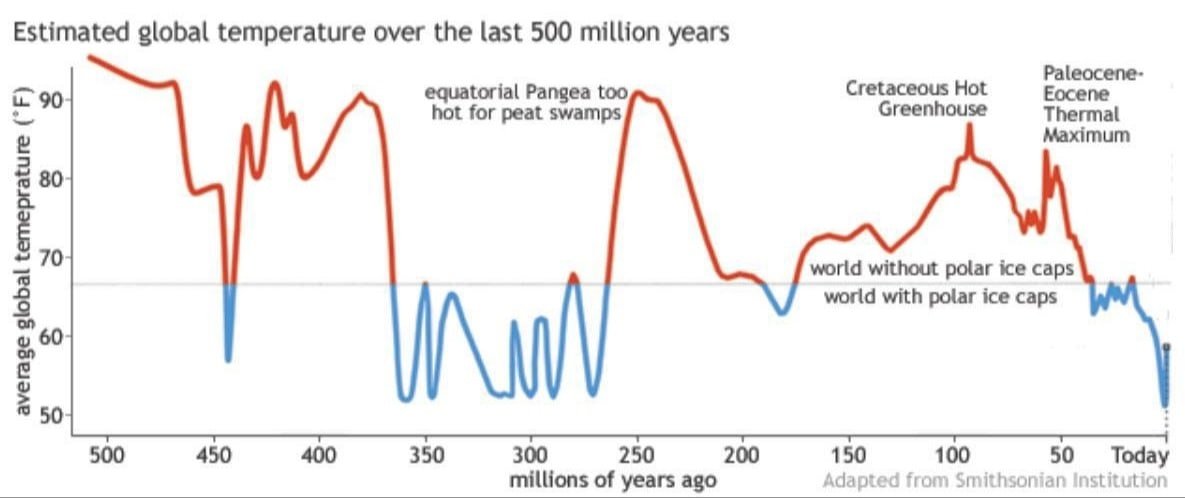Introduction to Harold’s Temperature Data Collection
In a small town nestled in the heart of the Midwest, an unassuming retiree named Harold took on an extraordinary task: collecting daily high temperature data for his local community. At first glance, this endeavor might seem insignificant, but Harold’s dedication and meticulous record-keeping have shed light on the intricate patterns of weather and climate in his region.
Harold’s fascination with meteorology began at a young age, when he would eagerly await the evening news to catch the latest weather reports. As he grew older, his curiosity only deepened, and he became increasingly interested in understanding the nuances of temperature fluctuations and their potential impacts on the environment and daily life.
Driven by a desire to contribute to scientific knowledge, Harold embarked on his data collection journey armed with a simple thermometer and a notebook. Each day, without fail, he would venture outside and carefully record the highest temperature reached. Over the years, his notebooks filled with rows upon rows of meticulously documented data, forming a rich tapestry of information that could potentially unlock valuable insights.
Harold’s methodology, while humble, was rooted in scientific principles. He ensured that the thermometer was placed in a consistent location, away from direct sunlight or other sources of heat that could skew the readings. He also maintained a strict schedule, taking measurements at the same time each day to maintain consistency and accuracy.
The Importance of Citizen Science
Citizen science, the practice of involving non-professional scientists in scientific research, has become increasingly important in recent years. Amateur scientists, driven by curiosity and a desire to contribute to scientific knowledge, play a vital role in collecting data on a massive scale that would be impossible for professional researchers alone.
One of the primary benefits of citizen science is the ability to gather crowd-sourced data from a vast network of participants across different locations. This approach allows for the collection of large volumes of data, providing researchers with a more comprehensive understanding of phenomena that may vary across geographic regions or over extended periods.
Successful citizen science projects have made significant contributions to various fields. For example, the Audubon Society’s Christmas Bird Count, which began in 1900, has relied on volunteers to conduct annual bird censuses, providing invaluable data on population trends and distributions. Similarly, the Galaxy Zoo project, launched in 2007, has engaged millions of online volunteers in classifying galaxies from telescope images, leading to numerous scientific discoveries.
Citizen science not only expands the scope and scale of data collection but also fosters a sense of community engagement and scientific literacy among participants. By actively contributing to research, citizens gain a deeper understanding and appreciation for the scientific process, which can promote greater public support for scientific endeavors.
Harold’s Data Collection Process
Harold embarked on his temperature data collection project with a keen interest in meteorology and a desire to contribute to scientific research. Armed with a simple yet reliable digital thermometer, he meticulously recorded the daily high temperature at his location for an extended period.
Over the course of several years, Harold diligently noted the maximum temperature readings each day, creating a comprehensive dataset. He followed a consistent methodology, taking measurements at the same time each afternoon to ensure accuracy and consistency in his data collection.
Despite facing occasional challenges, such as power outages or equipment malfunctions, Harold remained dedicated to his task. He maintained detailed logs, noting any irregularities or disruptions that might have influenced the temperature readings. This attention to detail ensured the integrity of his data and provided valuable context for future analysis.
As his dataset grew, Harold explored various methods to organize and store the information, eventually settling on a spreadsheet format that allowed for easy data entry and manipulation. He also took precautions to back up his data regularly, ensuring its preservation for future reference and analysis.
Throughout his endeavor, Harold’s passion for contributing to scientific knowledge drove him forward. He understood the importance of citizen science and the valuable role that individuals can play in gathering data that might otherwise be unavailable to researchers. His commitment to accurate and consistent data collection laid the foundation for potential insights into local climate patterns and trends.
Location and Climate of Harold’s Data
Harold collected temperature data in his hometown of Flagstaff, Arizona, located in the northern part of the state. Flagstaff has a cold semi-arid climate, with four distinct seasons and a wide range of temperatures throughout the year.
The city sits at an elevation of around 7,000 feet (2,100 meters) above sea level, nestled among the peaks of the San Francisco Peaks and surrounded by ponderosa pine forests. This high-altitude location contributes to Flagstaff’s cooler temperatures compared to other parts of Arizona.
Summer temperatures in Flagstaff are generally mild, with average highs in the low 80s Fahrenheit (around 28°C). However, the city’s location in the mountains means that temperatures can drop significantly at night, with lows often dipping into the 40s Fahrenheit (around 8°C).
Winters in Flagstaff are cold, with average highs in the 40s Fahrenheit (around 7°C) and lows frequently dropping below freezing. The city receives a significant amount of snowfall, with an average of around 100 inches (254 cm) per year, making it a popular destination for winter sports enthusiasts.
Compared to the hot, arid deserts of southern Arizona, Flagstaff’s climate is considerably cooler and wetter, with a higher variation in temperatures throughout the year. This unique climate, influenced by the city’s elevation and surrounding terrain, makes Harold’s temperature data particularly valuable for understanding the diverse weather patterns within the state.
Analyzing Harold’s Temperature Data
After meticulously collecting daily high temperature readings over an extended period, Harold’s data offers valuable insights through statistical analysis. By examining trends, patterns, and deviations from historical norms, we can uncover intriguing revelations about local climate dynamics.
One crucial aspect of the analysis involves calculating basic descriptive statistics, such as the mean, median, and range of the temperature readings. These measures provide a broad overview of the data’s central tendency and variability, serving as a foundation for further exploration.
Time series analysis techniques can be employed to identify seasonal patterns and cyclical fluctuations in the temperature data. By decomposing the data into trend, seasonal, and residual components, we can gain a deeper understanding of the underlying temperature dynamics and their potential drivers.
Comparing Harold’s data to historical temperature records for the same location can reveal significant deviations or alignments with long-term averages. Identifying periods of unusually high or low temperatures can shed light on potential climate shifts or anomalies, contributing to our understanding of local climate patterns.
Furthermore, statistical tests, such as correlation analysis and regression modeling, can be applied to investigate the relationships between temperature and other environmental variables, such as precipitation, humidity, or atmospheric conditions. These analyses may uncover causal factors influencing temperature variations and aid in developing predictive models.
Visualizations, including line graphs, scatter plots, and heat maps, can effectively communicate the patterns and trends present in Harold’s temperature data. These visual representations can highlight anomalies, seasonal variations, and long-term trends, making the data more accessible and comprehensible to a broader audience.
By leveraging statistical techniques and analytical tools, Harold’s temperature data can contribute to a deeper understanding of local climate dynamics, inform decision-making processes, and potentially support broader scientific research efforts in the field of climatology.
Potential Applications of Harold’s Data
Harold’s meticulous collection of daily high temperature data could prove invaluable for a wide range of applications and stakeholders. Scientists studying climate change and long-term temperature trends could utilize Harold’s localized data to complement larger-scale weather station networks and climate models. By analyzing patterns and deviations in Harold’s temperature readings over time, researchers could gain insights into microclimate variations and the impacts of urbanization on local temperatures.
Meteorologists and weather forecasters could also benefit from Harold’s data, particularly in areas with sparse official weather station coverage. His hyper-local temperature readings could help refine short-term forecasting models and provide a more granular understanding of temperature variations within a specific region or neighborhood.
Urban planners and city officials could use Harold’s data to inform decisions about urban design, green space allocation, and heat mitigation strategies. By identifying localized hot spots or areas with higher temperatures, they could prioritize interventions such as tree planting, cool roof installations, or the creation of shaded public spaces to improve thermal comfort and reduce the urban heat island effect.
Additionally, Harold’s data could be valuable for agricultural purposes, helping farmers and growers monitor temperature conditions and make informed decisions about crop selection, planting schedules, and irrigation needs based on localized temperature patterns.
Overall, Harold’s dedication to collecting daily high temperature data has the potential to contribute to a wide range of scientific research, weather forecasting, urban planning, and agricultural applications, ultimately benefiting communities and advancing our understanding of local climate dynamics.
Data Quality and Validation
One of the main concerns with citizen science data collection is ensuring accuracy and reliability, especially when dealing with amateur observers. However, there are several methods that can be employed to validate and quality control data from sources like Harold.
First, it’s important to have a standardized data collection protocol that is easy to follow and minimizes potential errors. This could involve providing clear instructions, using calibrated instruments, and having data entry checks. Cross-training of observers can also help ensure consistency.
Next, the data should go through a vetting process to identify and remove any obvious outliers or errors. This can be done through automated data filters as well as manual review by subject matter experts. Discrepancies or questionable data points can be flagged for further investigation.
A robust quality assurance plan is key. This may involve comparing the citizen science data to readings from nearby official weather stations or remote sensing data. Statistical techniques can identify systematic biases. Periodic audits of sampling procedures should also be conducted.
With proper validation, citizen science data can provide a wealth of hyperlocal environmental information at high spatial and temporal resolution. While not a replacement for professional monitoring networks, datasets like Harold’s can be an extremely valuable supplement when subject to rigorous quality control. Crowdsourced data has been successfully integrated into many scientific research initiatives.
The Future of Citizen Science
The future of citizen science looks incredibly promising, with increasing popularity, improved tools and technologies, better coordination of volunteers, and emerging data-sharing platforms. As more people become aware of the valuable contributions citizen scientists can make, participation rates are soaring. User-friendly apps, sensors, and web platforms are making data collection easier and more accessible than ever before.
Coordinating these distributed networks of volunteers is becoming more streamlined through centralized projects and initiatives. Organizations are better equipping citizen scientists with training, resources, and clear guidelines to ensure high-quality data collection. Simultaneously, new data-sharing platforms are facilitating collaboration and open access to these citizen-generated datasets.
Looking ahead, citizen science will likely become even more mainstream and impactful. Technological innovations will further empower volunteers to contribute meaningful observations and measurements across a wide range of disciplines. Governments, research institutions, and companies are increasingly recognizing the immense potential of citizen science to drive discovery, inform decision-making, and solve complex challenges at a global scale.
Getting Involved in Data Collection
Collecting environmental data like temperature readings is a great way for citizen scientists to contribute to scientific research and understanding. Even if you’re an amateur without formal training, there are many opportunities to get involved and make a meaningful impact.
One of the easiest ways to start is by setting up a basic weather station in your backyard or community garden. You can purchase affordable thermometers and rain gauges online or at local hardware stores. Be sure to follow best practices for placement and recording data consistently.
If you want to take it a step further, consider joining an existing citizen science project like CoCoRaHS or Nature’s Notebook. These organizations provide training, data entry platforms, and connect you with a network of fellow observers.
For those interested in more advanced monitoring, look into purchasing or building your own air quality sensors or soil moisture probes. Open-source projects like Air Quality Egg and Citizen Scientist provide instructions and kits.
No matter what type of data you collect, be diligent about recording measurements accurately along with metadata like time, location, and conditions. Consistent high-quality data is crucial for research applications.
Get creative too! Environmental data collection is wide open for experimentation. You could track phenology by monitoring plant life cycles, count wildlife sightings, or measure water quality parameters. Develop your own hypotheses and methods.
The key is to start small, follow protocols, and have fun getting hands-on with science! Citizen data is invaluable for filling gaps, validating models, and understanding our changing world.
Conclusion
Harold’s dedicated efforts in collecting daily high temperature data serve as a remarkable example of citizen science in action. By meticulously recording and documenting this valuable environmental information, he has contributed to our understanding of local climate patterns and trends.
Throughout this endeavor, we have explored the significance of citizen science, the process Harold undertook, and the potential applications of his data. From monitoring climate change to informing urban planning and resource management, Harold’s contributions hold immense value.
However, the true power of citizen science lies in its ability to engage individuals like Harold, empowering them to make a tangible difference in scientific research. By actively participating in data collection and observation, ordinary citizens can play a vital role in advancing our knowledge and understanding of the world around us.
As we continue to face global challenges such as climate change and environmental degradation, the need for citizen scientists like Harold becomes increasingly crucial. Their efforts not only provide valuable data but also raise awareness and foster a deeper connection between communities and the natural world.
We encourage you, our readers, to follow Harold’s inspiring example and explore opportunities to contribute to citizen science initiatives. Whether it’s monitoring local wildlife, tracking air quality, or documenting weather patterns, your participation can make a significant impact. Together, we can build a more comprehensive and inclusive scientific understanding, one observation at a time.
Join the ranks of citizen scientists today, and let your passion for knowledge and exploration drive positive change in our world.










